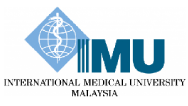Assessment Of Basic Practical Skills In An Undergraduate Medical Curriculum
Authors: Sambandam Elango, Ramesh C Jutti, Palayan Kandasami, Cheong Lieng Teng, Li Cher Loh, Tirathram Motilal.
ABSTRACT
Introduction: Health educators and accrediting bodies have defined objectives and competencies that medical students need to acquire to become a safe doctor. There is no report in Malaysia, about the ability of medical students to perform some of the basic surgical skills before entering the houseman ship. The aim of this study is to determine whether the teaching/ learning methods of practical skills in our undergraduate program have been effective in imparting the desired level of competencies in these skills.
Methods: A list of basic practical skills that students should be competent has been identified. These skills are taught in a structured way and assessed as part of the composite end-of-semester examination. Practical skills stations form part of an Objective structured practical examination (OSPE).
Results: The results of 244 students who participated in three ends of semester examinations were analyzed. The mean score for the practical skills stations were higher than the mean OSPE (of all 18 stations) and overall score (of the written, practical and clinical examination). However the failure rate in the practical skills stations is higher in most of the stations (7 out of 8 stations) compared to overall failure rates.
Conclusions: In spite of the formal skills training many students failed to demonstrate the desired level of competencies in these stations. Assessment of practical skills as part of overall composite examination may not be effective in ensuring that all students have achieved the required level of competency. Practical skills should be assessed through dedicated formative assessments to make sure that all the students acquire the required competencies.
Keywords: clinical competence, practical skills, assessment.
Citation: IeJSME 2007: 1 (1): 41-45

